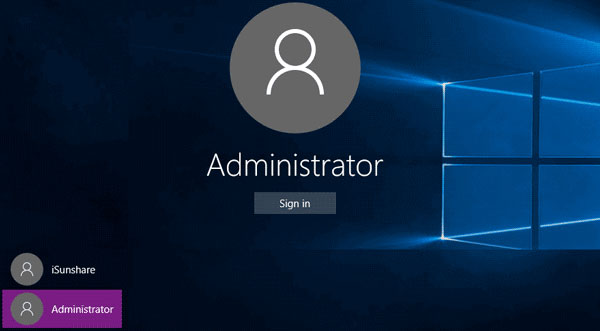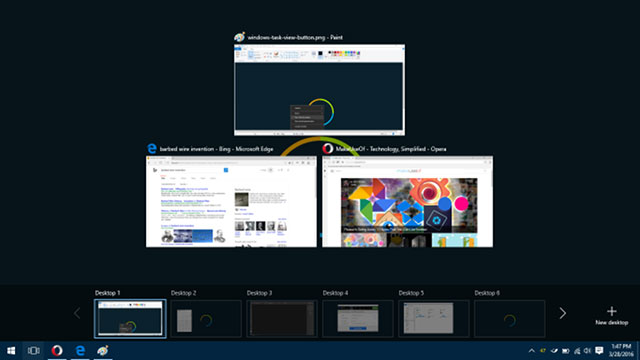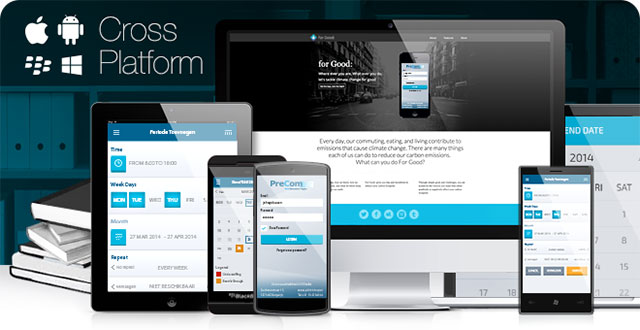What do Windows and Linux have in common?
There are many articles that introduce new Windows features or why you should switch to Linux. But instead of pointing out which operating system (OS) features are still the OS, let's see what they have in common. No matter which side you choose, even though sooner or later you will find them all very functional and effective. Here are 10 common points of these 2 operating systems.
User account
Just like running many different Chrome user profiles, these two operating systems also allow access to multiple user accounts . It may be a little inconvenient to log in, but this feature is still very effective when there are multiple users, or used in the organization. Even for individual users, you can use 1 account for work, 1 admin account and 1 personal account.

On Windows, users can easily manage multiple accounts, lock them, use an administrator account. Although User Account Control can be frustrating, it is still very important for security. Linux is similar, along with some other features.
Switch between windows with Alt + Tab
Windows users sometimes complain when this feature or other feature is stolen from Linux or Mac. But here's the feature that Microsoft pioneered in 1985 on Windows 1.0: using Alt + Tab to switch between windows.
It was then called CoolSwitch, then renamed to Task Swichter on Windows 95 and Windows Flip on Windows Vista. Many Linux desktop environments such as KDE or GNOME also integrate this feature with their own version.

Task View
Windows and Linux still "steal" each other's features all the time. While Alt + Tab is Microsoft's original product, Linux imitates Task View (or Virtual Desktops below) from Linux.
Releasing a window management tool called Compiz in 2006, Linux gives users the ability to manage windows very conveniently: display all windows on the screen and switch between them with a single click. . This feature on Mac is called Mission Control (formerly Dashboard and Expose). Windows 10 finally released a similar feature. With Windows + Tab shortcut , you can view all windows easily.
Virtual screen (Virtual Desktops)
Virtual screens keep windows open in different spaces to optimize space. For example, you can split 3 screens: 1 for email and music, 1 for work and 1 for entertainment. In other words, each virtualization screen is a workspace. Linux first brought virtualization screens in 1990 while Microsoft ignored it for years and only included it from Windows 10 in 2015.

Bash and PowerShell
Perhaps we are approaching the era where people will ask each other "should use Windows or Linux". Not only do cross-platform software appear more, but even developers after each OS seem to be more willing to cooperate.Demonstrating how PowerShell can be used on Linux and Bash can be used on Windows 10 . Both have their own advantages and disadvantages, but you don't need to make any difficult choices, because whatever you use. An example is Microsoft that provided the open source .NET Framework in 2014, making it easy to create cross-platform applications.
Multi-platform software
One of the biggest differences between Windows and Linux is the software. Many software, applications, games are only available on Windows. Meanwhile, Linux has many proprietary applications. However, this is not so important.

Most popular software is available on 3 main platforms: Windows, Mac and Linux such as VLC, LibreOffice, Spotify, Visual Studio Code, popular browsers . Many of them also have web versions that can Multi-platform work.
Automatically complete tasks
This is an important feature for every kit. Not only saves time, but also brings convenience. On Linux, Cron is a background application that regularly checks the work schedule (called Cron jobs) and runs it all the time. On Windows, you will use the Task Scheduler, where the process of setting up the task with the wizard is easy to use.
Server and Desktop
For most people, Linux is more like a server operating system, whereas Windows is more like a Desktop OS. The truth is you can use both. There are people who only use email and text editing on Ubuntu and Windows have long had a server version.
Windows Server was born in 2003 and is still updated every 4 years. The latest version is Windows Server 2016. Although Windows is said to be unstable, Windows Server is famous for its stability.
Security holes
A very common but completely misleading thought is: Windows is safe and Linux is less secure. Linux is safer than Windows but it is also not perfect. Remember that Windows accounts for 90% of the market, so it is also the main attack object of malware. Of course, both need anti-virus software to ensure safety.
32-bit and 64-bit versions
Both operating systems have 32-bit and 64-bit versions selected. Old machines can run 32-bit versions, but any machine with 4GB of RAM should run a 64-bit version to take advantage of memory. 64-bit versions often have faster processing speeds, faster memory segmentation, but it also has the disadvantage of consuming more CPU, may not be compatible with drivers and 32-bit software.
Related articles:
7 main differences between Windows and Linux
Instructions on how to share data between Windows and Linux
You should read it
- The Korean government is going to use the Linux operating system instead of Windows because of the expensive cost
- How to Install Linux Mint Operating System
- 12 best Linux server operating systems
- Interesting operating systems may be unknown to you
- Instructions for installing Linux operating system on Chromebook
- How to create dual boot Linux and Windows 10 on Linux
 Prepare Japanese learning spirit on Duolingo
Prepare Japanese learning spirit on Duolingo How to register for the contest of Vietnam Hackathon Vietnam 2017
How to register for the contest of Vietnam Hackathon Vietnam 2017 Visualize programming for those who don't know the code
Visualize programming for those who don't know the code If anyone tells you illusions then they probably don't know Tango yet
If anyone tells you illusions then they probably don't know Tango yet Top 14 technology companies all want to start
Top 14 technology companies all want to start Look inside Facebook's ideal office in New York
Look inside Facebook's ideal office in New York